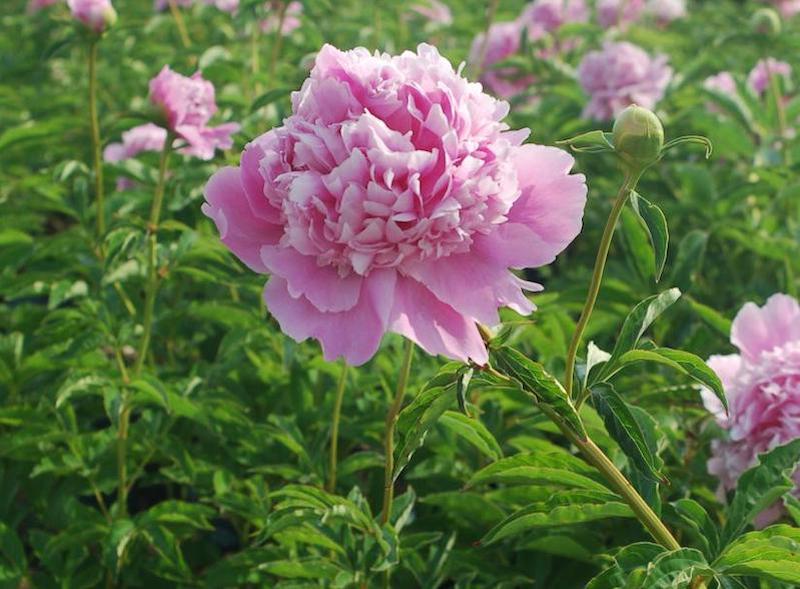Fragrant and showy, known as the “queens of spring”, Peonies gift us with gorgeous flowers in mid to late spring. Herbaceous Peonies make excellent cut flowers and are popularly used as specimens in garden borders or planted en masse for show-stopping flowering hedges. Peonies are long-lived garden performers, and by providing them with their ideal planting requirements, they will produce for many years to come. Peonies must be planted in full sun locations, and ideally in well-draining, loamy soil with a pH of 6.5-7.0. Peony tubers must be planted at a shallow depth, as planting too deeply can result in a failure to bloom.

How to Fertilize Peonies
Peonies require well-draining soil, with a pH of 6.5-7.0, and existing garden soil can be amended with a bit of organic compost. New tender growth appears in spring, forming red shoots at the soil level. Be careful to work around these growth points when applying your fertilizer as they are tender and can be damaged easily. Water the area first before applying a water-soluble or a slow-release granular fertilizer. Peonies flower and grow best with a lower-nitrogen fertilizer which should be applied around the base of the root zone in early spring once you see approximately 2 inches of new red growth shoots appear.

Best Time To Fertilize Peonies
Fertilize Peonies in early spring, once you notice 2-3 inches of new growth appearing from the soil level.
Best Fertilizer For Peonies
Apply a fertilizer for blooming plants with a lower ratio of nitrogen in the early spring once the stems are emerging from the ground and are a few inches high. Because new growth appears from the eyes at the soil level, be very careful not to disturb the dark red, tender shoots emerging. Water-soluble fertilizers are sometimes easiest to apply for this reason. Never allow any fertilizer to touch new tender growth, and always water or work in fertilizers around the plant's root area. Water thoroughly before and after fertilizing, and avoid overhead watering, which can encourage mildew to develop on the foliage.
Peonies Fertilizing Tips
- Apply a low-nitrogen fertilizer in early spring
- Saturate the area around the roots well with water
- Apply fertilizer around the root zone
- Work carefully, avoid disturbing new tender growth shoots
- Over-fertilization can cause diseased roots – apply sparingly
- Test soil pH and amend acidic soil
Warnings
-Always wear protective gloves and a face mask when handling chemical fertilizers.
-Closely follow all directions and storage guidelines that are on the fertilizer label.
 |
Author Chris Link - Published 02-14-2023 |
